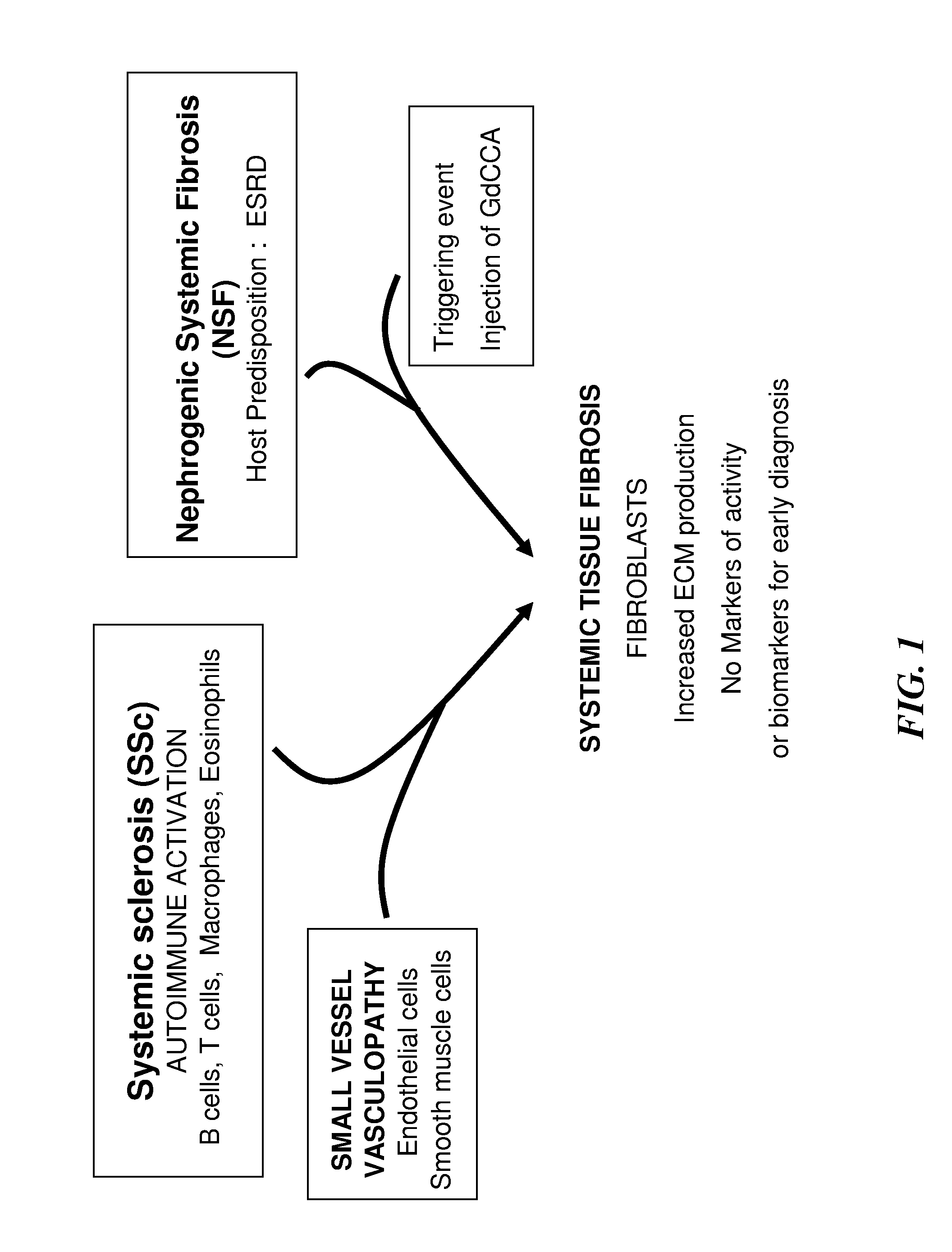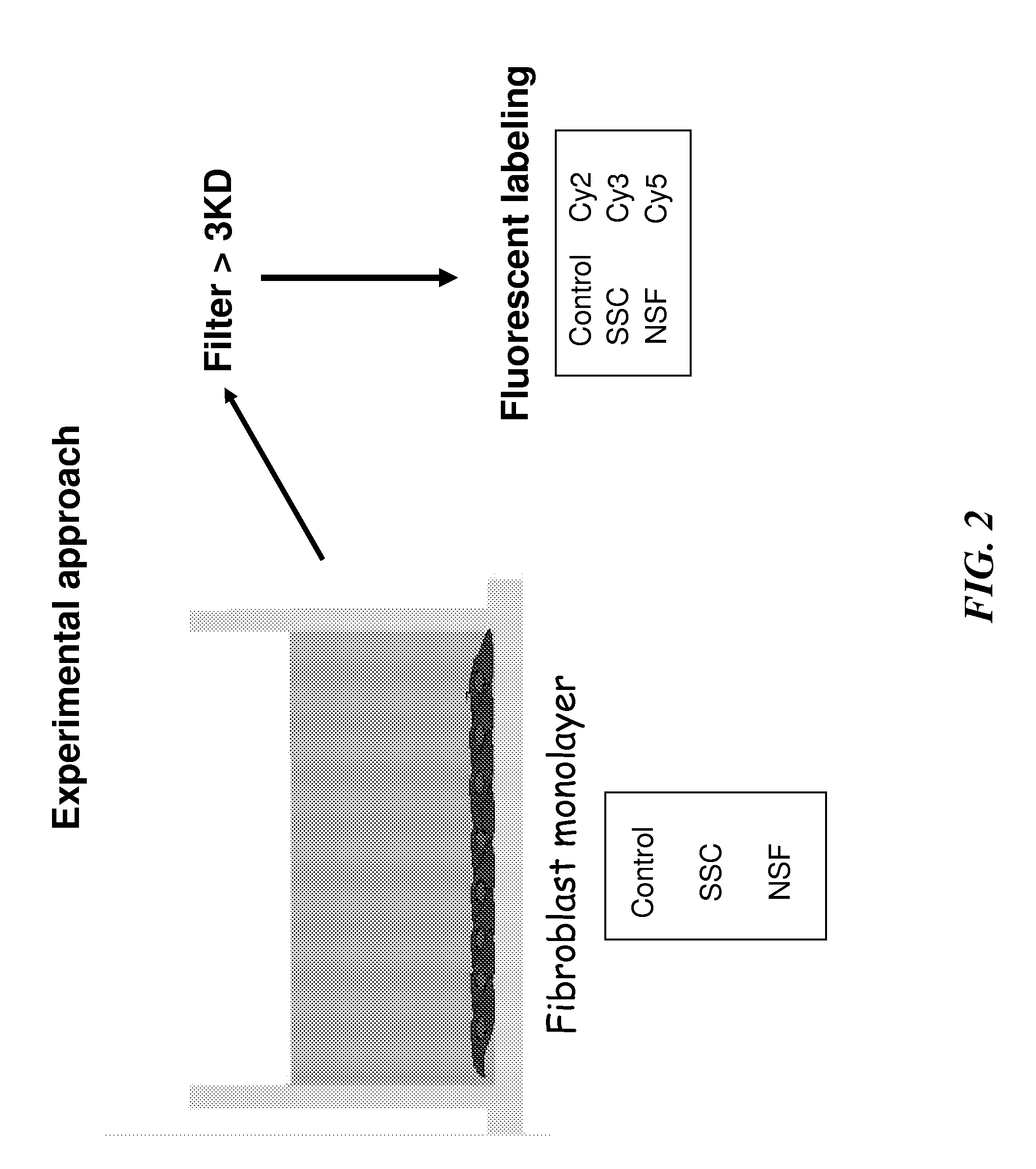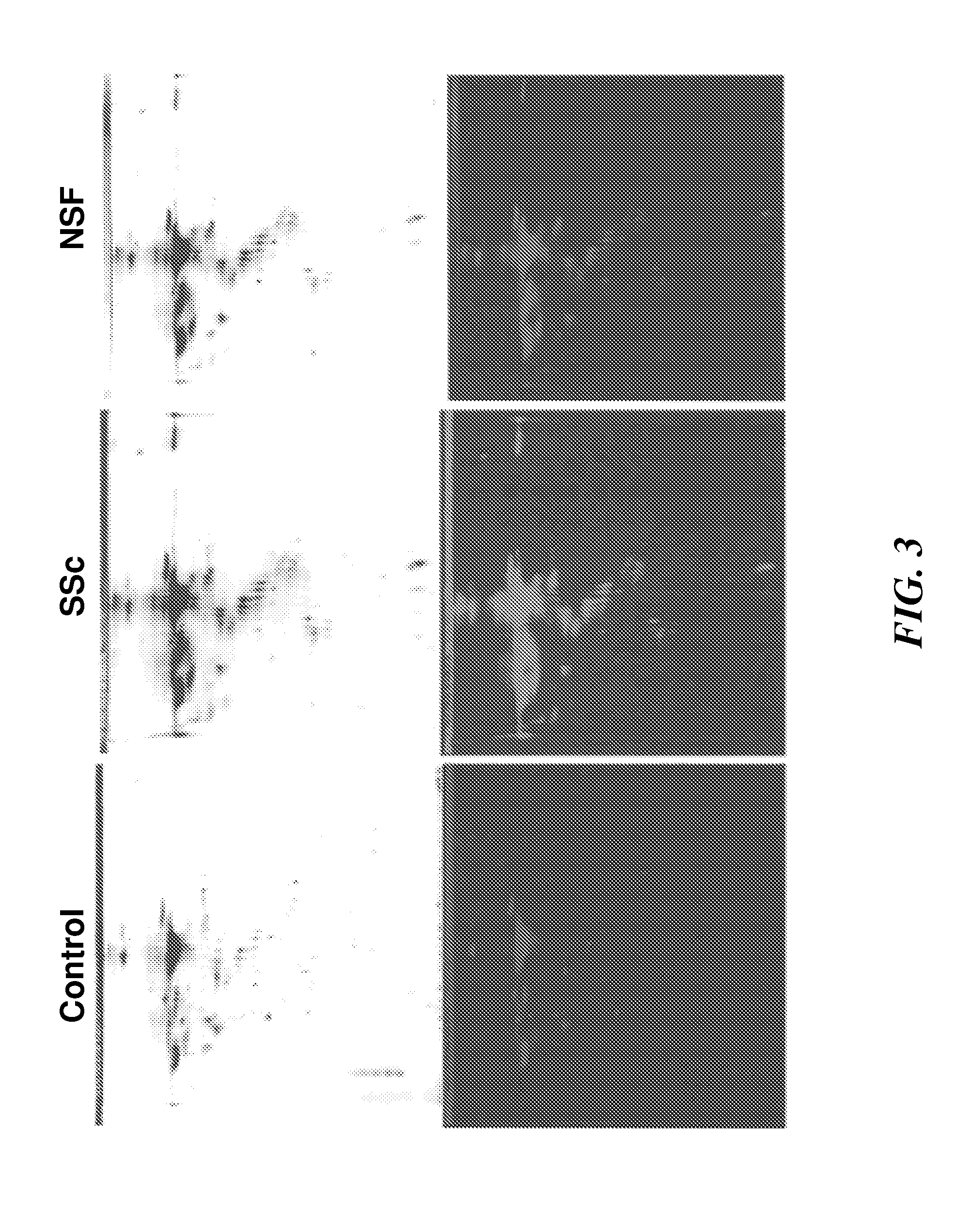Biomarkers for early diagnosis of systemic tissue fibrosis
a systemic tissue and early diagnosis technology, applied in the field of biomarkers for early diagnosis of systemic tissue fibrosis, can solve the problem that individuals can be one at risk of developing fibrotic conditions, and achieve the effect of increasing the amount of select proteins
- Summary
- Abstract
- Description
- Claims
- Application Information
AI Technical Summary
Benefits of technology
Problems solved by technology
Method used
Image
Examples
example 1
Proteomic Analysis of Systemic Fibrosis (SSC) and Nephrogenic Systemic Fibrosis (NSF) Secretome
[0324]The most frequent systemic fibrotic disorder is SSc, a disease characterized by excessive deposition of collagen and other connective tissue macromolecules in skin and multiple internal organs, prominent and often severe alterations in the microvasculature, and humoral and cellular immunologic abnormalities (FIG. 1). The most apparent and almost universal clinical features of SSc are related to the severe fibrotic changes occurring in multiple tissues and very prominently in the microvasculature (Varga and Abraham, J., Clin. Invest., 2007, 117:557-567; Jimenez and Derk, Ann. Intern. Med., 2004, 140:37-50). The extent and rate of progression of tissue fibrosis is of paramount importance in measuring the clinical features and the prognosis of SSc. Indeed, fibrosis of the skin correlates with both survival and functional limitations (Denton C P, et. al., Nat. Clin. Pract. Rheumatol., 20...
example 2
Diagnostic Lateral Flow Immunoassay (LFIA) Test Strips-Design 1
[0344]The levels of biomarker proteins associated with SSc, NSF or other chronic fibrotic diseases described herein can be determined using lateral flow immunoassay (LFIA) test strips as illustrated in FIG. 9-10. This test strip can be used in point-of-care testing (POCT). The test strip has a sample (S) position at one end of the test strip and a control (C) position found at the opposite end the test strip (FIG. 9A). There is a test (T) position located at the middle of the test strip, between S and T. For this embodiment of a test strip, the solid support 91 can be made of plastic or other non porous material, supporting the matrix 93. Located at S is a defined quantity of dehydrated anti-biomarker protein antibody. The defined quantity of dehydrated anti-biomarker protein antibody, when rehydrated, will bind at saturation a fixed amount of biomarker antigen, meaning that this fixed amount of biomarker protein will co...
example 3
Diagnostic Lateral Flow Immunoassay (LFIA) Test Strips-Design 2
[0351]An alternative embodiment of the lateral flow immunoassay (LFIA) test strips for measuring the level of biomarker protein level is illustrated in FIG. 13A-D. This test strip can be used in point-of-care testing (POCT). Here the test strip contains two different anti-biomarker protein antibodies specific for the same biomarker; each antibody binds the biomarker at a different epitope. This is a double sandwich LFIA test strip. The first antibody is labeled (e.g. colored latex beads), deposited on the solid support matrix but is not immobilized on it, (i.e. the antibody is mobile), and is deposited in excess at the S position. The second anti-biomarker protein antibody is not labeled but is immobilized and is in excess at position T. This second anti-biomarker protein antibody binds an epitope on the biomarker that is not affected by the binding of the first antibody. At position C, there is an excess of non-labeled ...
PUM
| Property | Measurement | Unit |
|---|---|---|
| Level | aaaaa | aaaaa |
Abstract
Description
Claims
Application Information
 Login to View More
Login to View More - R&D
- Intellectual Property
- Life Sciences
- Materials
- Tech Scout
- Unparalleled Data Quality
- Higher Quality Content
- 60% Fewer Hallucinations
Browse by: Latest US Patents, China's latest patents, Technical Efficacy Thesaurus, Application Domain, Technology Topic, Popular Technical Reports.
© 2025 PatSnap. All rights reserved.Legal|Privacy policy|Modern Slavery Act Transparency Statement|Sitemap|About US| Contact US: help@patsnap.com



